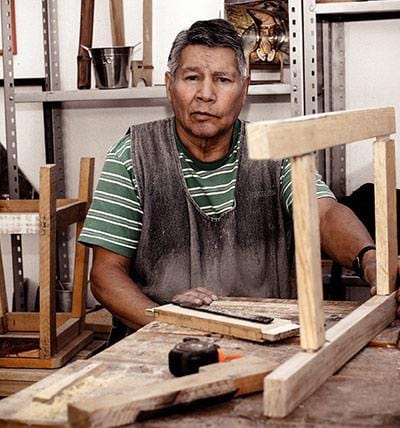Making your very own wooden beer mug is an easy process that only requires a few simple tools and materials. And if done properly, you will be rewarded with a unique, high-quality item that you can use for years. So, without further ado, let's get started with this step-by-step guide on how to make your own handmade beer mug!
Making a Wooden Beer Mug
Having a handmade beer mug is an incredibly rewarding experience. Not only have you taken part in the traditional practice of creating your own mug, but you also have a one-of-a-kind item to show off to your friends and family.
A wooden mug is a great way to keep beverages cool. It can also serve as a decorative piece. Wooden mugs require special care in order to keep them in good condition so be careful when you clean and store them.
Introduction: Inside and Outside of the Process
The materials that are used to make a wood mug can also affect its durability and water resistance.
There are lots of options when it comes to picking the right wood, such as pine, walnut, cedar, resin, etc.
Glass inserts, for example, are an excellent option because they offer good protection from water. However, glass is not environmentally friendly and may impact the natural authenticity of a wooden mug. Stainless steel is another popular option, as it offers both durability and a nice aesthetic.

The downside of this choice is that it can break or crack if dropped. Besides material, you will also need some tools. The most important are these: table saw, miter saw (for planned length of the strips), router table, sanding tools, hammer, glue, grit sandpaper, and food grade beeswax.
Step 1 - Cutting the Wooden Strips
The first step is to cut the wood strips. You can use a table saw or circular saw but be sure to stay alert and keep your hands away from the blade and pay attention to the wood thickness you want to achieve. Find the best balance to make a smooth cut and make all the measurements before starting to cut. After it is done, next thing you need to do is to rout them on both sides. After that place them face up and cut to desired length using your miter saw (depending on how tall you want your cup to be).
Step 2 - Apply Tape and Insert Strips
If necessary, clean the surfaces where you will be installing these strips to remove any lint or dirt that could decrease the bonding strength of the adhesives. Then, squeegee the air bubbles that may be present between the surface and the tape. This will prevent gaps from forming and weakening the adhesives over time. Repeat this process until all the strips are applied. This can take some time, but it is important to keep the final product sturdy and strong.
Step 3 - Glue Application and Insertion
Normally the glue is applied to the surface and then tamped onto it. It is important to spread the glue evenly and not to press the objects too tightly to each other.
When using a glue brush you can focus the adhesive on a small area while spreading it out over a larger area. These tools also make it easier to apply very thin layers of glue. You need to glue your wood strips so be careful. When glued tightly, wrap them into a cylinder. The next thing is waiting (from 8-24h to be sure everything is perfectly glued).
Glue application and insertion are two of the most important steps in making a wooden mug. Taking time to correctly do each step will pay off in the end. You will have to stick bottom to the strips, and you can make the bottom by placing the strips (cylinder) on the surface and using your pencil to draw the circle (the bottom of the mug). Beeswax will seal everything and you can always sand off the extra.
Step 4 - Sanding the Wood
Sanding is a process of preparing bare wood to be able to accept a finish. Lots of people use an angle grinder for this purpose. It's often overlooked, but sanding properly is critical to the quality and uniformity of your finished project.
You want to start with a sandpaper that is coarse enough to remove all the worst defects, such as planer marks, deep scratches, and other blemishes, but not so fine that you're sanding off more material than is necessary.
When sanding with the coarser grits, you'll need to make many passes across the surface of the wood. Each pass will remove a little more of the sanding dust and will smooth out the wood a little more.
You don't need to sand all the way down to 180-grit; you can stop at 120, but it's recommended to sand with 180 again to remove any more sanding dust and make the surface of the wood smoother before you apply a finish. This can be especially important if you're planning to paint or stain the wood.
Step 5 - Finishing with Beeswax
In addition to being a nourishing and protective coating for wood, beeswax can also be used to create a beautiful finish on wooden items.

It will create a lustrous, glossy look while still allowing the wood to breathe and retain its natural beauty. The amount of beeswax needed to coat a piece of wood will depend on its absorption capacity and whether you want the finish to have a high gloss or not.
It is a good idea to apply at least two layers of wax, removing any excess residue with a rag after each application.
Step 6 - Seal the Outside with Food Safe Wax
A waxy finish not only prevents moisture loss and keeps wood looking fresh, but it also adds a nice glossy sheen to the finish. Waxy finishes come in a variety of formulations, including paraffin, wax derived from reed-like plants, and wax emulsified with a petroleum-based solvent.
Drill Press for Antique Effect and Final Sealing
Using a drill press is a great way to create an antique effect and final sealing of a wood mug. The drill press is used to not only create the desired shape for the mug but also to provide a smooth finish to the wood. Once the shape is achieved, the chosen final sealant can be applied, typically a wax or polyurethane finish. This ensures that the mug will be protected from stains, water, and everyday wear and tear. With a drill press, you can also use sandpaper to sand down any rough areas or to blend in any carving details. After sanding, a topcoat of sealant can be applied, giving your wood mug an antique effect and great protection against damage.
Recommendations for Use of a Wooden Mug (Coffee, Tea, etc.)
You can use your non-toxic DIY cup for lots of things and here are a few suggestions.
- Drinking: They provide a natural feel and warmth that standard glass or metal mugs don't offer. They can also absorb flavor, adding another layer of complexity to your drink.
- Serving: The rustic feel adds character to the presentation and can be dressed up or down depending on the occasion. Plus, they make a great conversation piece!
- Cleaning: It is easy and doesn't require any special care. Simply rinse with warm water and dry with a soft cloth after every use.
- As a Gift: These cups would be the perfect gift for anybody who enjoys drinking beer. Likewise, if you make a coffee mug and give it as a present, it is going to show all the time and effort you put into creating one.
- Storing: You can put pasta, wooden chopsticks, or even cookies inside the mug. With the warm vibe surrounding it, this mug will make a perfect addition to any setting.
Conclusion
Making a beer mug is an incredibly rewarding and fun experience. You get to choose the type of wood and shape of the mug, as well as customize it with carvings or engravings of your own design. Being able to craft your own unique beer mug is an amazing feeling, knowing that you've made something that is both beautiful and useful. Plus, there's nothing like lifting up your own creation and having a sip from it - a moment of pride and accomplishment in having created something that you can use and enjoy.

Related Questions
How do you waterproof a wooden cup?
To waterproof a wood mug, you need to clean the surface, sand it, apply a thin layer of food-safe mineral oil or beeswax, and let it dry completely. This will help to prevent the wood from getting wet and swelling, preserving the look and structure of the mug.
Can you drink coffee out of a wooden cup?
Yes, you can drink coffee out of a wooden cup. However, it's important to make sure the wood has been treated with a food-safe finish or oil to prevent any harmful chemicals from leaching into your drink. It is also good to note that it is not recommended to pour boiling water or hot liquids into a cup made of wood, because it can cause it to leak.
What is the best wood to make a mug?
The best wood to make a mug depends on the individual's preferences and needs. Hardwoods such as maple, cherry, and oak are popular choices as they are durable and able to withstand daily use.
How to make a wooden cup?
To make a cup, you will need to start by selecting the right wood and cutting it to size. Then, shape the wood using a lathe or sandpaper, and apply a food-safe finish or oil to the surface. After it dries, the cup is ready for use.
ABOUT THE AUTHOR
Aleksandra Djurdjevic
Senior Content Creator
Aleksandra Djurdjevic is a senior writer and editor, covering jewelry, accessories, and trends. She’s also works with services, home décor. She has previously worked as ESL teacher for English Tochka. Aleksandra graduated from the Comparative Literature department at the Faculty of Philosophy in Serbia. Aleksandra’s love for the environment, crafts and natural products over the years helps her continue to be a top expert at Wooden Earth.






